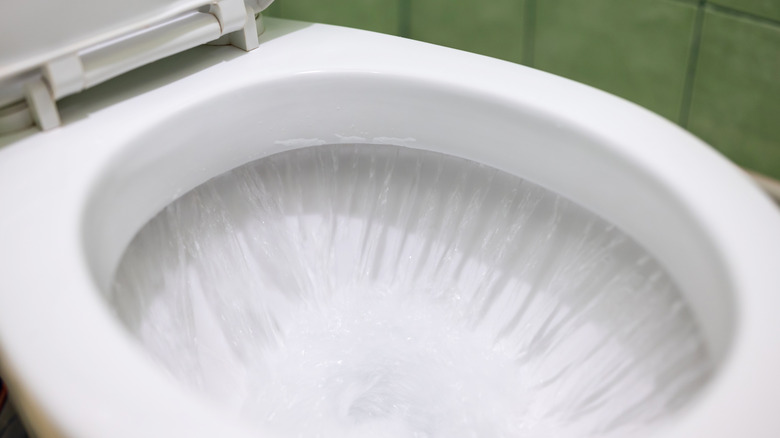The No-Cost Way To Check If Your Toilet Is Continuously Running (& Wasting Your Money)
If you're hearing a constant trickling or dripping sound coming from your toilet, even after it has completed a full flush cycle, there's a good chance water is leaking from the tank into the bowl. The flapper inside the tank is designed to let just enough water through during a flush, but if it's not sealing properly, water can continue to sneak into the bowl, causing that constant running sound (and wasting a lot of water, which costs you on your utility bills). The good news is that it's usually a simple fix you can take care of yourself. Before you call a plumber or buy any replacement parts, there's an easy and free way to check if your toilet is running (and leaking), using just a bit of food coloring from your kitchen.
Start by flushing your toilet and making sure the bowl is clear of any toilet paper. Wait until the water is completely done running after the flush. Then, grab a bottle of food coloring (a packet of Kool-Aid can also help you check for toilet leaks) — try to go with a dark color, like red or blue, since it's easier to see in the water than a light color like yellow. Take the lid off the tank, and squeeze in a few drops of your food coloring. Don't flush the toilet or do anything else. Let the color settle into the water, then wait without flushing. Lastly, check inside the toilet bowl after 15 to 30 minutes — if you see any trace of the food coloring in it, it means you have a leak that's letting the water from the tank flow into the bowl.
What to do if your toilet fails the dye test
If your toilet didn't pass the color test, meaning you noticed food coloring seeping into the bowl from the tank, it often means your flapper needs replacing. It likely isn't sealing tightly, which allowed the dyed water to slowly make its way into the bowl. Toilet flappers typically last around four to five years, so it's normal for them to wear down over time. However, they can also become damaged, which can interfere with them functioning properly. A worn or broken flapper can't seal the flush valve correctly, and, in return, it allows water to continuously leak from the tank into the bowl.
Luckily, replacing a worn-out flapper is fairly simple. Start by identifying what type and size of flapper your need. You can do this by inspecting the flapper currently inside your tank — it's the rubber piece covering the flush valve opening (the hole where water rushes into the bowl). Most toilets use a standard 2-inch flapper (about the size of a baseball), but some require a larger 3-inch version. If the flapper is closer to a softball size, go with the 3-inch.
Now, to replace the flapper, follow these steps. Turn off the water supply, and drain the tank by flushing the toilet. Remove the old flapper and chain. Wipe around the flush valve opening to remove any debris — this helps the flapper close tightly. Install the new flapper, leaving a little slack in the chain. Once the new flapper is installed, turn the water supply back on, and perform the color test again to ensure the leak has been resolved.

